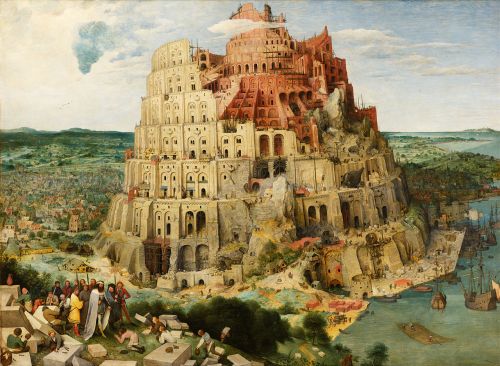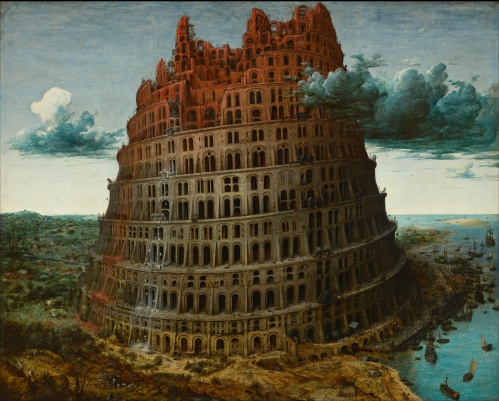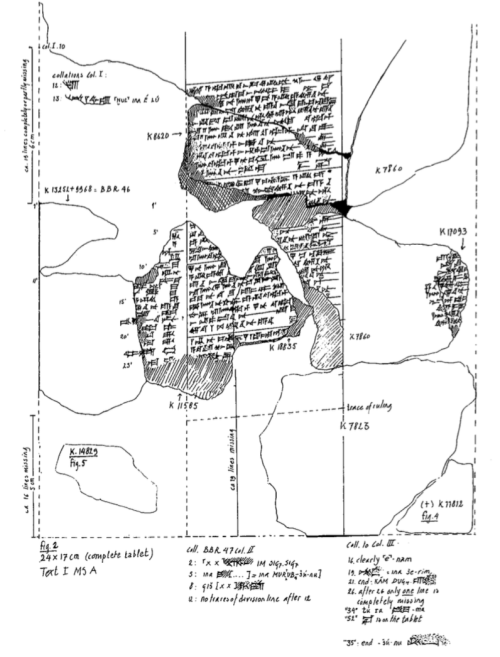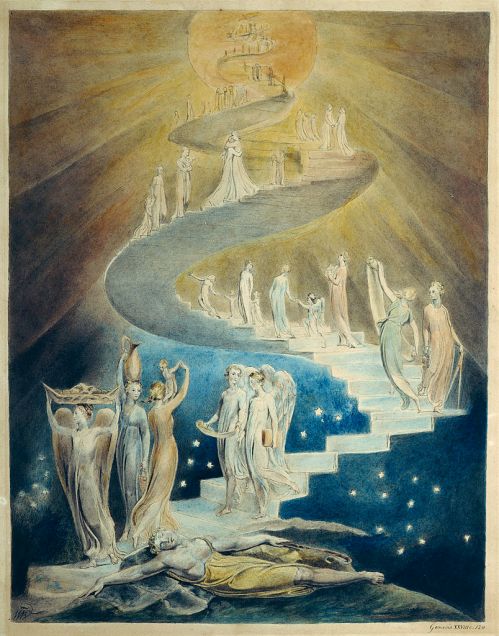Eco: Search for the Perfect Language, 2.

Pieter Brueghel the Elder (1526/1530-1569 CE), The Tower of Babel. Brueghel painted three versions of the Tower of Babel. One is kept in the Museum Bojimans Van Beuningen in Rotterdam, the second, this one, is held in the Kunsthistoriches Museum in Vienna, while the disposition of the third version, a miniature on ivory, is unknown. Faithful reproductions of two-dimensional public domain works of art are public domain.
“Beyond this, I have decided to consider only projects concerning true and proper languages. This means that, with a bitter sigh of relief, I have decided to consider only the following:
- the rediscovery of languages postulated as original or as mystically perfect — such as Hebrew, Egyptian or Chinese;
- the reconstruction of languages postulated, either fancifully or not, as original or mother tongues, including the laboratory model of Indo-European;
- languages constructed artificially for one of three ends: (a) perfection in terms of either function or structure, such as the a priori philosophical languages of the seventeenth and eighteenth centuries, which were designed to express ideas perfectly and to discover thereby new connections between the diverse aspects of reality; (b) perfection in terms of universality, such as the a posteriori international languages of the nineteenth century; (c) perfection in terms of practicality, if only presumed, such as the so-called polygraphies;
- more or less magic languages, whether they be discovered or fabricated, whose perfection is extolled on account of either their mystic affability or their initiative secrecy.
By contrast, I can give no more than bare notice to any of the following:
- oneiric languages, not expressly invented, such as the languages of the insane, or of trance states, or of mystic revelations (like the Unknown Language of Saint Hildegarde of Bingen), as well as all the cases of glossolalia or xenoglossia (cf. Samara 1972); Goodman 1972);
- fictitious languages, either in narrative (from Rabelais to Foigny up to Orwell’s ‘Newspeak’ and Tolkien), or in poetry (like Chlebnikov’s transmental speech). In the majority of these cases, we are presented with only short stretches of speech, supposedly representing an actual language, for which, however, there is provided neither a lexicon nor a syntax (cf. Pons 1930, 1931, 1932, 1979; Yaguello 1984).
- bricolage languages, that is languages that are created spontaneously by the encounter of two linguistically distinct cultures. Typical examples are the pidgins arising in areas of colonialism. As cross-national as they may be, they are not universal. They are, rather, partial and imperfect because they have a limited lexicon and an oversimplified syntax; they are used to facilitate simple activities such as barter, but are unable to express higher types of experience (cf. Waldman 1977);
- natural tongues or jargons serving as vehicular languages in multilingual zones. An example of such a language of exchange might be Swahili, the lingua franca of large areas of East Africa. Modern English would be another example. French was formerly an example, if one considers that, during the Convention, the Abbé Gregoire revealed that, out of a population of twenty-six million, fifteen million French men and women spoke a language other than that of Paris (Calvet 1981: 110);
- formal languages whose use is limited to special scientific purposes, such as the languages of chemistry, algebra and logic (these will be considered only as they derive from projects defined by category 3(a) above;
- the immense and delectable category of the so-called fous du language (see, for example, Blavier 1982; Yaguello 1984). Admittedly, in such cases it is not always easy to distinguish between technical insanity and mild glottomania, and many of my own characters may sometimes show some aspects of lunacy. Still, it is possible to make a distinction. We will not consider belated glottomaniacs. Nevertheless, I have not always been able to keep down my taste for whimsicality, especially when (even though the belatedness was hardly justifiable) those attempts had, anyway, a certain, traceable, historic influence, or, at least, they documented the longevity of a dream.
Similarly, I do not claim here to examine the whole of the researches on a universal grammar (except in cases in which they clearly intersect with my topic), because they deserve a separate chapter of the history of linguistics.
Likewise, this is not (except, again, where the subject intersects with that of the perfect language) a book about the secular, or rather, millennial, question of the origins of language.
There are infinite discussions on the origins of human language which do not consider the possibility or the opportunity of returning back to the language of our origins, either because they assume that it had definitely disappeared, or because they consider it as radically imperfect.
Finally, were it up to me to decide under which heading this book should be filed in a library catalogue (an issue which, for Leibniz, was bound up with the problem of a perfect language), I would pick neither ‘linguistics’ nor ‘semiotics’ (even though the book employs semiotics as its instrument, and demands a certain degree of semiotic interest from its reader).
I would rather pick ‘history of ideas.’ This explains why I make no attempt to construct a rigorous semiotic typology for the various types of a priori and a posteriori languages: this would require a detailed examination of each and every project, a job for students of what is now called ‘general inter linguistics.’
The present book aims instead at delineating, with large brushstrokes and selected examples, the principle episodes of the story of a dream that has run now for almost two thousand years.”
Umberto Eco, The Search for the Perfect Language, translated by James Fentress, Blackwell. Oxford, 1995, pp. 2-5.






